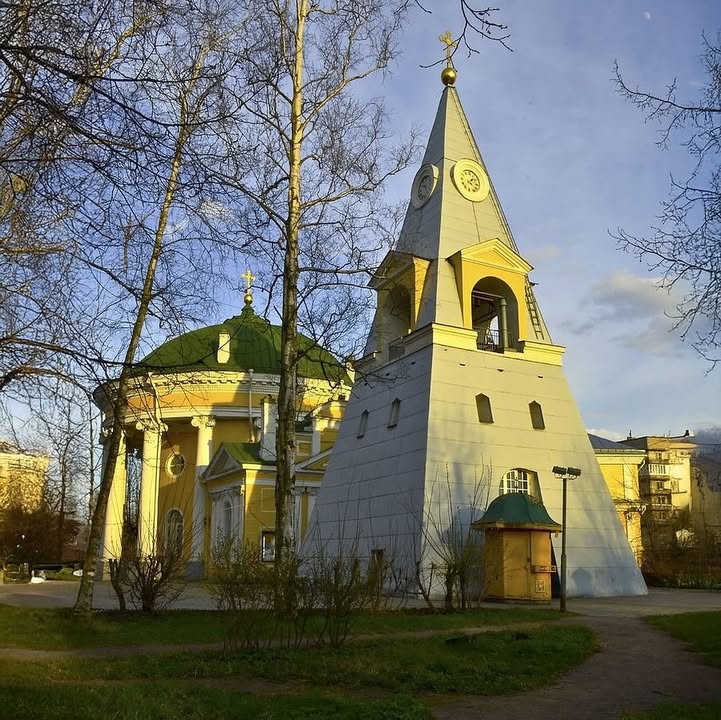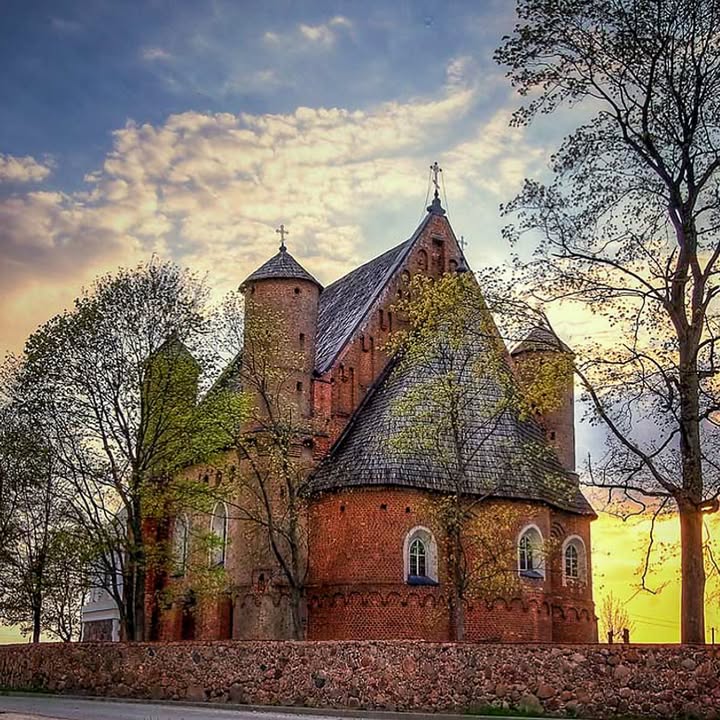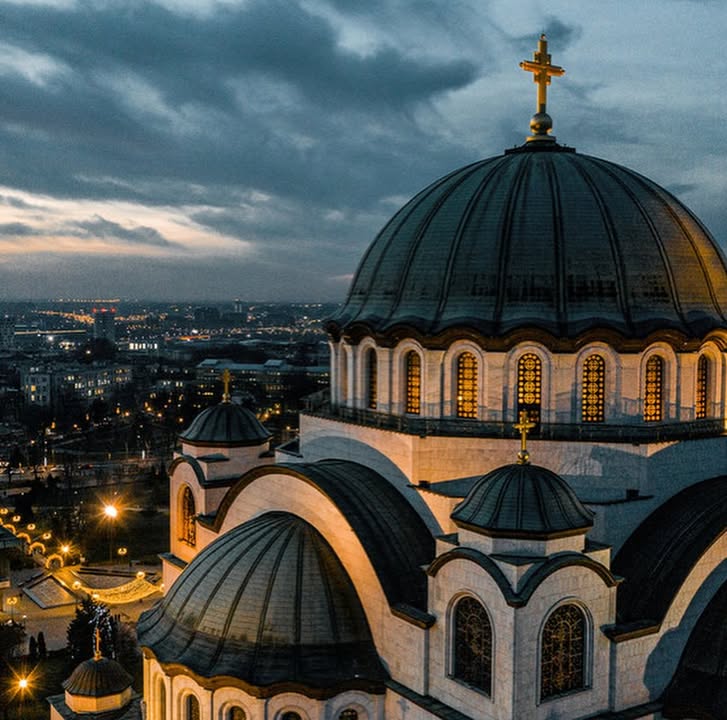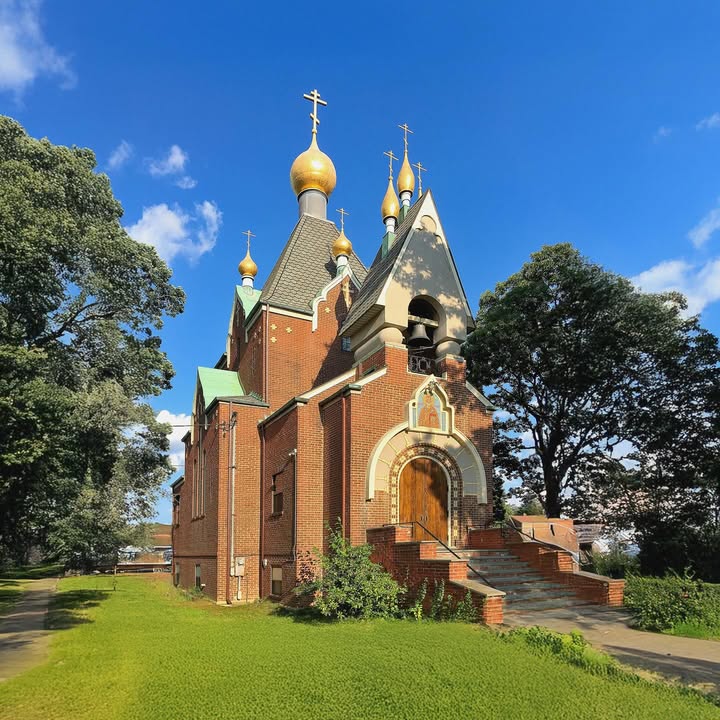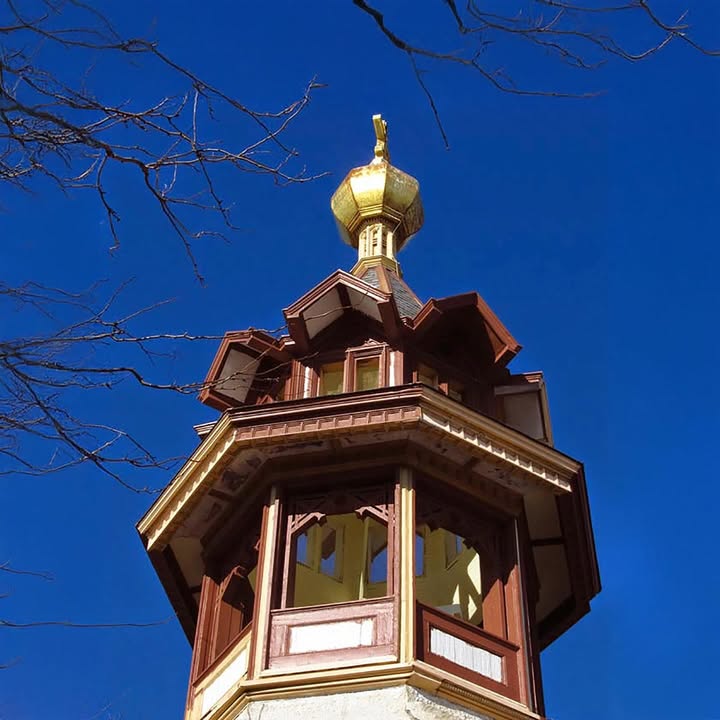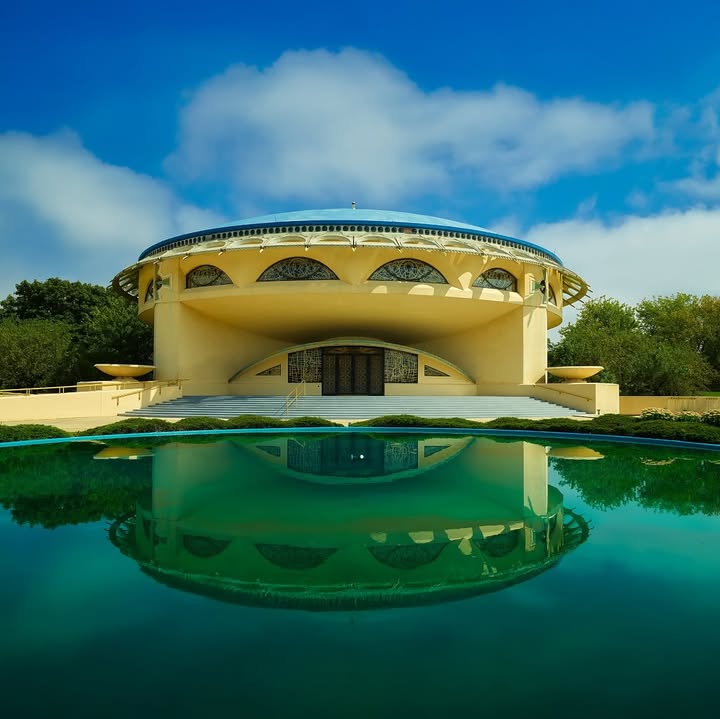What do you really know about canonical church form-making? Ever…
What do you really know about canonical church form-making? Ever heard of a church nicknamed “Kulich and Paskha”? That’s what the locals called this breathtaking ensemble the moment it was built in 1785—and the name stuck like honey to sweet bread. But behind this charming nickname lies one of the most original examples of Orthodox church design in Russian history. The Church of the Holy Life-Giving Trinity stands on the former estate of Prince Alexander Vyazemsky, and while the architect was none other than the legendary Nikolay Lvov, the vision itself came from the prince. A rotunda crowned with sixteen columns, meant to echo a “Temple of Justice.” And beside it, a pyramidal bell tower, embodying the unity of three virtues: compassion, truth, and conscience. From an architectural perspective, it’s a stroke of genius. Monumental, symbolic, and at the same time unexpectedly domestic—the main volume rises like a kulich (Easter bread), and the bell tower mirrors the traditional pyramid-shaped paskha dessert. It’s sacred architecture served with a dash of folklore. Today, services still echo within the rotunda’s grand interior, while the “paskha” houses a baptismal chapel below and the bell chamber above. Two volumes, one spiritual rhythm. If you think traditional church architecture can’t surprise you—think again. This is what happens when faith, form, and meaning meet. #molodin #aleksandrmolodin #molodinarchitect #OrthodoxChurchDesign #TraditionalChurchArchitecture #SacredArchitecture #ArchitecturalServices #CustomChurchDesign #ProfessionalChurchArchitect



